Spray Paint Engine
Article by Mark Trotta
Applying a few coats of paint to your rebuilt engine provides protection as well as good looks. Here's some tips to spray paint an engine block, cylinder heads, intake manifold, etc, from an aerosol spray can.
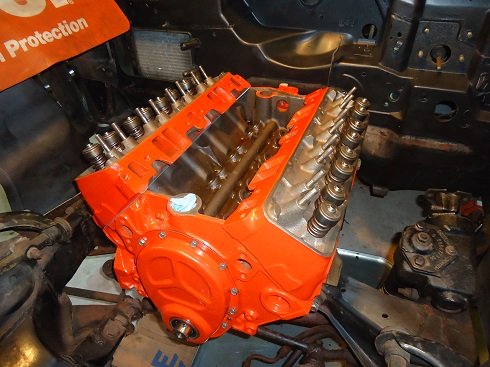
Painting Cast Iron
Cast-iron metal is porous, kind of like a sponge. It soaks up oil, and when something is painted that has oil in it, the paint will eventually peel off. This is because has not adhered properly.
A primer coat is generally not needed on cast-iron parts.
Painting Aluminum
Some metals, like aluminium, aren't easily painted and require a primer. The surface is not adhesive enough and the paint may flake off. A primer will provide a good base-coat to help the paint adhere correctly.
NOTE: If you are priming with a spray can, allow to dry for at least an hour before spraying the top coat. Thicker applications dry slower than thinner coats.
***********************
Surface Prep
Clean the metal surface with mineral spirits or brake parts cleaner, and then dry with compressed air, then apply tape to mask off anything you don't want painted.
Most likely the engine block will be on a stand, but for other parts (cylinder heads, manifolds, etc), place on a piece of cardboard or heavy paper. You can prop up the items with pieces of wood or cinder blocks.
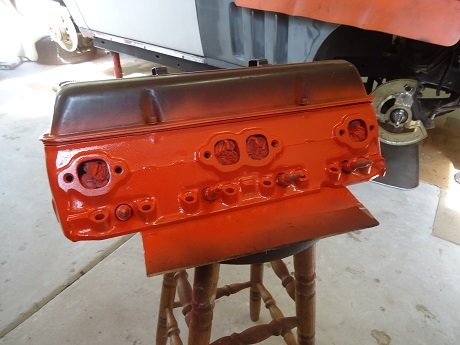
TIP: Try to keep your work pieces off the ground where dirt and dust settle.
***********************
Ventilation
Generally, spray paint fumes aren't as harmful as other paint, but good ventilation provides not only fresh air for you, it also helps the finished product dry faster.
If you can, select an area that is well-ventilated.
***********************
Shake Spray Can Thoroughly
Shake the can vigorously for at least one full minute. You will hear the mixer ball rattle in the can. Turn it from top to bottom while shaking.
For bigger jobs, repeat the mixing process occasionally throughout the painting process.
***********************
Test Before Painting
It's wise to test the paint on scrap material or a piece of cardboard before aiming it at your metal project. There are a several reasons for this.
First, it's to check that the nozzle is clear. I've sprayed a few brand-new cans (after shaking well) and had paint dribble out on my hand. One cure for this is to take a spray nozzle off an old can that worked well.
You also want to make sure it's the right color!
Another reason why you should test the spray can before you spray paint the engine is to get used to how the paint flows. As you do a little testing on something other than your project, you'll get a feel to how close you can get before getting sags and runs.
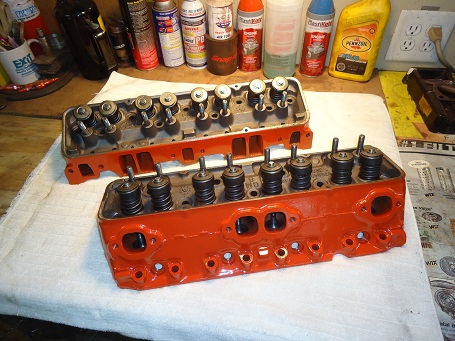
Try holding the can as close as six inches from the surface, then back away if the paint starts running.
***********************
Spraying The Color Coat
There's several ways to spray paint, the most common being starting at the top and slowly sweeping downward from left to right with slight overlap. Hold the can approximately 10 to 12 inches away from the metal surface. Getting too close causes drips and runs, and painting too far causes brittle, uneven spraying.
You can pause after each sweeping motion by letting go of the trigger. Once the first coat is done, allow the paint to dry for 30 to 60 seconds. Continue to apply a 2nd light coat, then stop and observe the surface. Sometimes two coats is all that's needed.
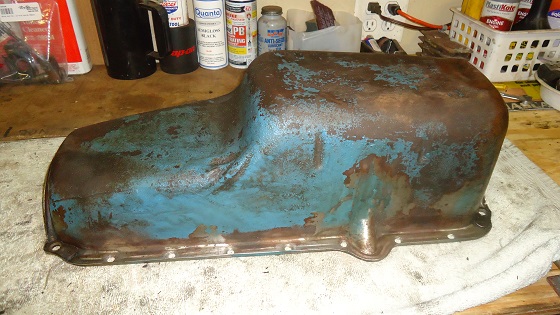
The oil pan in the above and below pictures was sanded down to bare metal, scuffed, then painted with color coat (no primer coat).
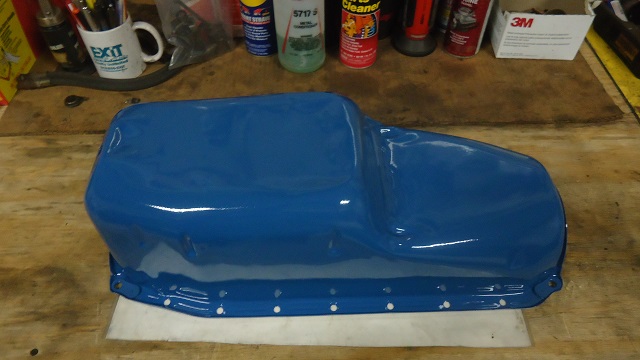
***********************
Allow Paint To Dry
When you are satisfied with the appearance, stop and allow paint to dry. Allow the last coat of paint to dry at least one day before handling the object. Don't rush the drying process!
***********************
Sanding Out Imperfections
If you see dirt or grit in the paint that you want to remove, first allow the paint to thoroughly dry (one day minimum). Then, take a small 600 or 1000 grit strip of wet/dry sandpaper (folded over) to lightly smooth out the imperfections. Keep the surface area wet, and sand lightly to avoid cutting through the color coat.
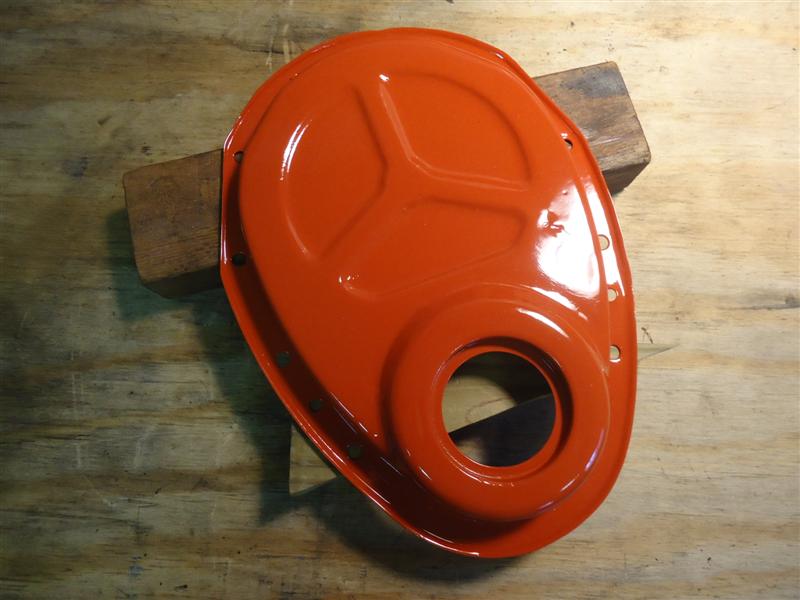
***********************
When Not To Paint
Avoid windy conditions. Humidity greatly affects how paint dries and adheres. Choose locations and times of day accordingly. Spray painting metal in between 50 to 80 degrees is optimum.
***********************
What Brand Spray Paint Is Best?
I've sprayed Duplicolor, Plastikote, Krylon, and Valspar brands, all with good results.
Shop: Chevy Orange Engine Paint
Shop: Ford Blue Engine Paint
Shop: Black Engine Paint
Shop: Aluminum Engine Paint
Shop: Red Engine Paint
Shop: Chrysler Blue Engine Paint
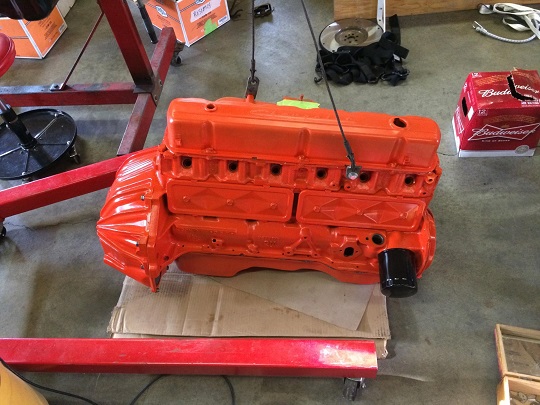
Proper Spray Paint Can Disposal
If you can't empty the entire can for any reason, or if you're not sure it's empty, rather than putting it in with regular trash, take it to a special collection for hazardous chemicals. The plastic spray cap should be recycled separately.
***********************
Related Articles:

327 Chevy Build
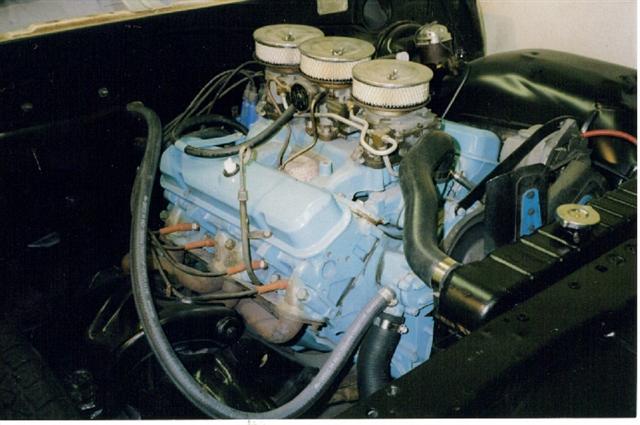
389 Pontiac Build
***********************